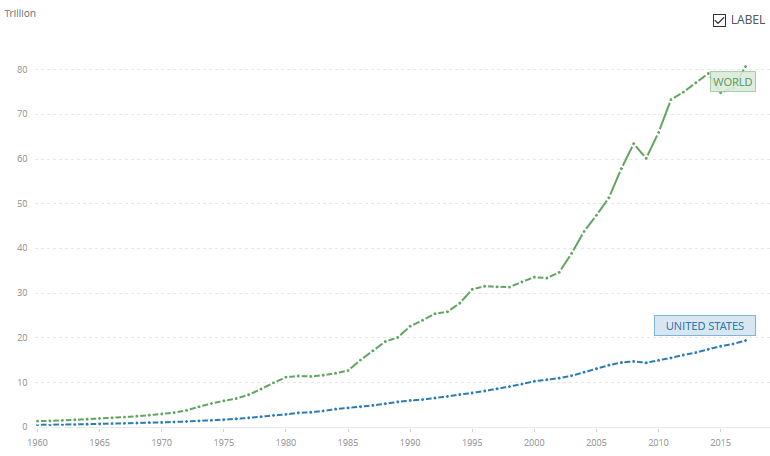There has been a lot of statements lately coming out of Russia (Putin in particular), China and other places about how the U.S. is in decline. Not sure what is the basis of these statements. Right now the United States GDP is $19.391 Trillion. The entire world’s GDP, according to the World Bank, is $80.684 Trillion. This means that the U.S.’s GPD makes up only 24% of the world’s GDP. This hardly puts us out in the dumpster.

Now, it has changed over time. In 1960 the U.S. GDP was $543.3 billion while the World’s was $1.366 Trillion. This is 40%. So we have declined from having 40% of all the goods and services of the world to only having 24% of all the goods and services in the world. I would argue that in fact this is not a decline, but a growth on the part of the rest of the world, and in many cases a well-deserved growth. In fact, it was the intention of the Marshall Plan to restore the European economy for the purpose of making stable democratic economically viable counties. This is a plan that succeeded in spades. The data from 1960 is only 15 years after the devastating World War II, so it is really no surprise that the U.S. economy, living in “splendid isolationism” or at least conveniently isolated by two very large bodies of water, was in much better shape than those people who had panzers running back and forth across their front lawns.
As of 1980 the United States GDP was 26% of the world GDP. Much of this change was a result of the growth of the western European and Japanese economies. It was before the later boom of the Chinese economy. But this is close to the same percentage as it is now. Just to compare over time:
Year…………Percent GDP
1960 40%
1970 39%
1980 26%
1990 26%
2000 31%
2010 23%
2017 24%
There is definitely a trend here, but it is a trend caused by the rest of the world growing, not by the United States declining. You can definitely see the world economy growing significantly after 2000. But most significant relative shift occurred between 1970, when the U.S. economy made up 39% of the world’s economy, to 1980, when it was down to 26%. It is now 24%, so really not a hugely significant shift in the last 40 or so years from the 26% it was in 1980. Not sure how you then conclude the United States is now in decline.
In the 57 years on this graph, the U.S. GPD actually only declined in one year (2009). That is a pretty good run.





